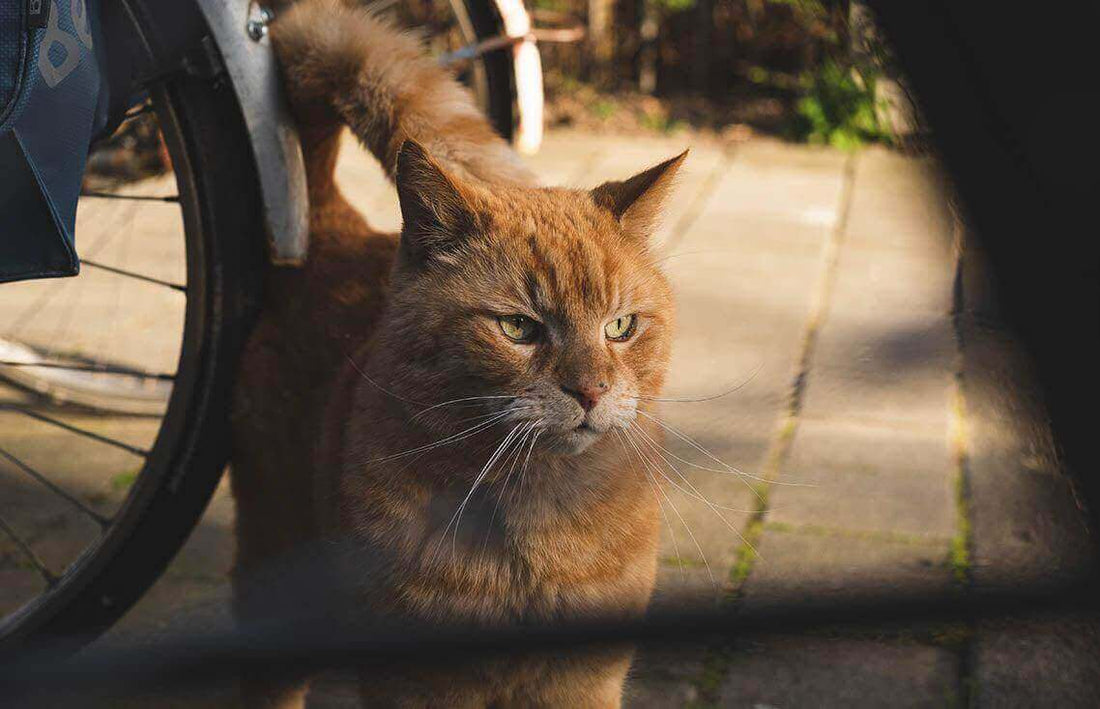
Redbarn's Guide to Traveling With Cats
Traveling With Cats Made Easy!
Traveling with cats for the first time may be a challenge, but isn’t necessarily impossible. Most cats are not in favor of leaving home. They don’t want to get into a vehicle and encounter strange things! If you are traveling with cats for the holidays or on vacation, following a few steps and tips may assure a cooperative, happy kitty while going away with you.
Before embarking on a trip, you will need to contact agencies, such as airlines and hotels, to ensure they are pet-friendly. If going by car, check some of the veterinarians along your route, in case of emergencies. Packing for your cat is just as important as bringing along your own needs; maybe even more. It takes more than just a few changes of clothing and toiletries to keep kitty happy in the absence of home-sweet-home. Here is a list of essentials you will need to pack when traveling with cats:
• All medication and vaccination records from your veterinarian
• A leash plus collar or harness
• Identification tags or microchip your pet
• A cat carrier filled with a comfy bed
• Food and water dishes
• Bottles of water and cat food
• Any special medications or special need items for your cat’s health
• Cat treats
• Toys
• Catnip
• Portable kitty litter box and litter
• Elimination bags
• Pooper scooper to clean litter box
• Photo of your pet in case of loss or other emergency
• You may need to consider light sedatives, per the advice of your veterinarian. Some cats get extremely stressed and may need a mild sedative, advisable only on car trips. You don’t want to give your pet any medications if traveling by plane, when you cannot monitor its health and behavior. Tranquilizers on planes is said to be fatal in most cases and should be avoided.
Before your trip, prepare your cat for the upcoming changes. Ensure that your cat is comfortable in a carrier; it is the safest method of travel for your feline, whether a road trip, air travel, or just a visit to the veterinarian. Using a carrier wen traveling with cats is easier when you begin at an early age. From the moment you adopt, place a bed and some toys in a carrier to introduce it as a safe haven; your cat will grow up thinking of it as a place to escape when stressed.
The same steps can apply for an older cat, requiring a little more time and patience. Along with a bed and toys, you may want to include its food dish and a favorite scent for added comfort and security. Maybe your cat favors a special family member or other pet companion. Take its blanket and rub it on that preferred member of the family to transfer its scent and present a comforting reminder for our cat while in the crate.
Once your cat is comfortable in the crate you can begin to gradually introduce it to short car trips. Maybe start with a trip around the block, a couple of times daily. Eventually, try making longer and longer car rides. Some cats may never totally enjoy the experience but most will adjust with time, patience, and persistence.
Be prepared in advance with some aids for motion sickness, as discussed with your veterinarian. You will also want to ensure ahead of time that your pet is healthy and up-do-date on all vaccinations. Advise your doctor of your impending trip and let him know where you are going. He will be able to advise you regarding any prevalent diseases or dangers that may affect your pet in your destination area. You want to be well-prepared for all possibilities. Most airlines, shelters and pet-friendly accommodations require a current medical certificate to guarantee your cat is healthy and current.
On the day of travel, you may want to avoid feeding your cat before leaving (especially if there is an issues with motion sickness). Feed your cat just a little food several hours, at least three or four, before getting on the road to avoid illness. If your veterinarian suggests motion sickness medication, there are some over-the-counter drugs that should be given according to the recommended dosage. Some safer medications may be available at the vet’s office specifically for your cat.
During the moments prior to your traveling with cats:
• Exercise your cat well prior to getting into the car to expel some of its energies and make kitty more comfortable.
• Be sure your cat is microchipped or wearing a collar or harness with current identification tags.
• Securely pack your car with all your needs, except for kitty, saving the best for last.
Along the way, you may need to stop frequently. Every couple of hours is best ,so that your cat can have a small snack, you can make sure all is going well, or just provide a little water and a litter box visit. With your cat in its crate, secure it in the backseat of the car with safety belts to keep it safe during travel. Keep a crack on windows to allow for air circulation, except in frigid temps.
As is always advised, never leave your pet in the car unattended, despite the weather. Surely don’t stop to at a dine-in eatery anywhere and allow your pet to remain in the car, despite the temperatures.
Ensure you have reservations at a pet-friendly facility along the way and at your final destination. There are not as many hotels that will allow for cats as there are for dogs. Some local pet shelters and animal associations can help you find places that do provide a nice, clean accommodation for the family and kitty. When making reservations, inquire what the pet fees are, weight limits, number of pets allowed, if you are allowed to leave the cat in the room unattended and any other special needs when staying at their facility. If you must leave a stressed cat in the room alone, ask your veterinarian prior to your trip if it is safe to medicate your pet, to keep it calm.
Planning a car trip with your cat, may prove easier than you first thought. On the other hand, if you must choose air travel for one reason or another, here are other factors to consider.
• Do your research and find an airline that allows pets. Inquire about their pet policies. Will your cat fit under your seat, a safer option, or will it have to travel in cargo? What are the number of pets per person, type of carrier required, medical requirements, and cost per pet?
• Make sure your cat fully identifiable with collar tags, microchip, and identification on the carrier that includes name, address, phone number and destination. Also mark the carrier itself (in marker) with all of your contact info, in the event that the tag gets detached and lost. It is always advisable to paste a photo of your pet on the carrier as well.
• Choose a flight with the least amount of stops and transfers in order to ward off any undue stress to your feline. Be aware of weather when traveling since the choice of a cargo area may not be monitored for warm or cold temperatures.
• Ensure that all the flight crew is aware of the pet on board so that others may consider looking in on it during flight for its safety and well-being.
Despite all preparations, traveling with cats may not be feasible. You may have to consider a pet sitter or kennel stay rather than taking the fearful kitty on a stressful trip out of town. It all depends on your cat, its stress level and age. Frequently, a cat does best to stay at home with a pet sitter checking in on it daily. At least your pet will feel comfortable in its own environment. It will miss the family but at least not be stressed out from motion sickness, strange environments and more. The choice is yours. You alone know your cat and how much it can handle. If it is adaptable to change and loves to be with its family, by all means opt for a car trip or other travel with your cat. If not, home is where the heart is and your cat may prefer its own safe environment. Either way, do what is in the best interest, health and happiness of your cat.


